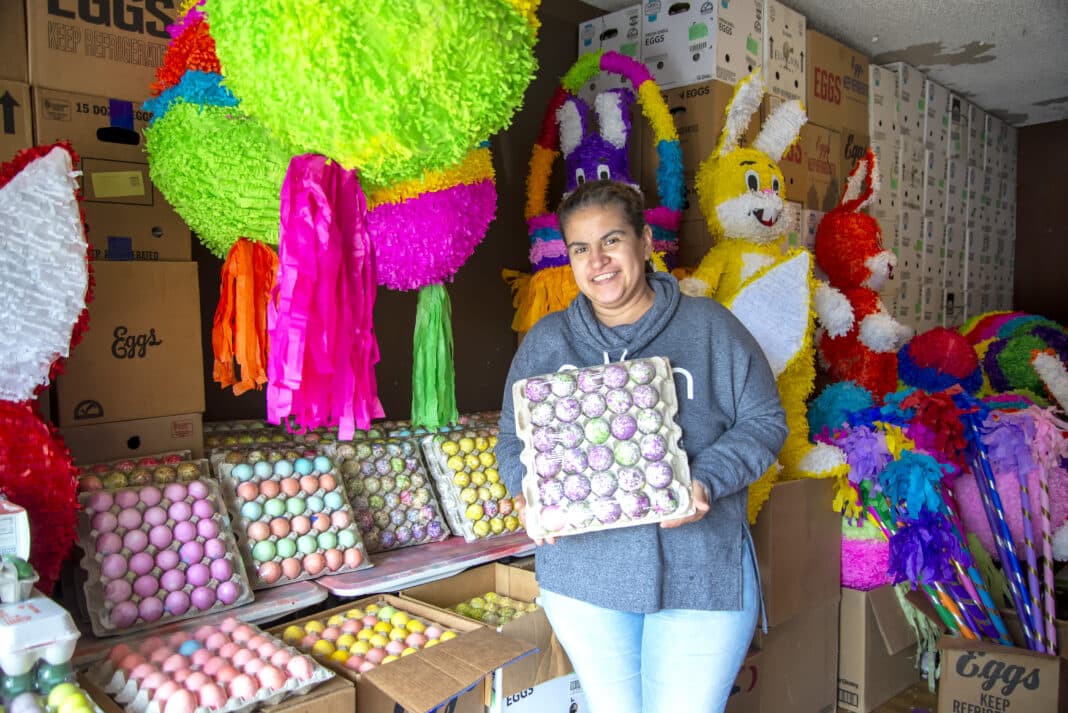HARLINGEN — Colorful pieces of confetti scattered on the floor are a typical Easter Sunday sight for Rio Grande Valley families. Painted eggshells filled with confetti are a Hispanic custom which has been a part of the Valley for years.
Commonly known as “cascarones,” sellers set their items out on street corners. But this year, many are selling from home.
(PHOTO GALLERY: Confetti egg makers share their story)
Zulma Mata, from Harlingen, has a full-time job but has been making cascarones for more than 20 years. Mata has been living in Harlingen since 1990 and began selling in the years 1999 and 2000. People in the community told her mother it was a typical activity done to make money in the Valley.
“We started with 300 boxes of 30 eggs each and then every year we would increase the number,” Mata said.
Mata goes to different panaderias and restaurants where they sell eggshells to her and she brings them back home and cleans them up. She lets them air dry and paints them with food coloring and fills them up with confetti.
Mata starts making the eggs a year before Easter, taking a two month break. She also sells pinatas of bunnies and eggs which she imports from Mexico.
“For me it is like therapy or a hobby; I get distracted while doing it,” she said.
“I like using different colors and mixing them to get a new color,” Mata said.
Usually she sells at Alejandro Tortillerias but because of COVID-19, this is the second year she sells from home.
Mata has sold eggs to people who ship them to Hawaii, California, many Winter Texans who take five or ten boxes. Mata has sold 1,500 to 2,000 cartons of 30 eggs this year as well as 500 of two dozens and a half, 300 dozens and 150 pinatas.
“I like how families get together, not just to crack the eggs but to be together,” she said.
Mata typically is working on Easter Sunday too because a majority of her clients order last minute.
On the other side of Harlingen, a mother and her children make Easter eggs as a family tradition. Monica Coto inherited the activity from her mother-in-law, who used to make them every day.
“She always said, les voy a dejar la herencia,” Coto said, which translates to the inheritance.
“While we are doing eggs it is like she is living within us,” she said. Coto remembered how her daughters helped her mother-in-law as early as when they were both two and three years old.

Just like Mata, Coto and her daughters work on painting and filling the eggs all year around. This year she sold 857 carts of 30 eggs each. She said it is a great way of spending time with family and spreading joy for Easter.
At the same time, for Coto, this is a way of showing her daughters to work for what they want. The family recently renovated one of her daughter’s rooms with money from Easter eggs.
“I am trying to teach them if they want something in life they have to work for it,” Coto said.




